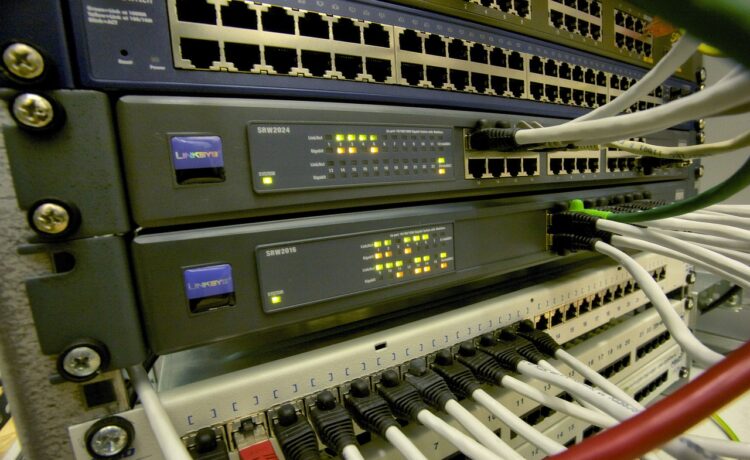In the world of networking and software development, certain concepts like 127.0.0.1:49342 are fundamental yet often overlooked. This guide aims to provide a detailed understanding of what 127.0.0.1:49342 represents, how it is used, and its significance in various contexts. Whether you’re a software developer, network administrator, or simply curious about how these elements work together, this article will offer valuable insights.
What is 127.0.0.1?
127.0.0.1 is an IP address reserved for loopback functionality, commonly known as the “localhost” address. This address is used to route network traffic back to the same machine, allowing applications and services to communicate with each other internally.
Key Characteristics:
- Local Communication: Traffic sent to 127.0.0.1 never leaves the host machine. This is useful for testing and development purposes.
- Isolation: Using 127.0.0.1 ensures that any network operations are isolated from external networks, which helps in creating a secure testing environment.
Understanding Port Numbers
In the context of 127.0.0.1:49342, the port number 49342 plays a critical role. Port numbers are used to identify specific processes or services on a computer that are using network connections. Each port number corresponds to a different application or service.
Port Number Ranges:
- Well-Known Ports (0-1023): Reserved for standard services like HTTP (port 80) and HTTPS (port 443).
- Registered Ports (1024-49151): Assigned for specific applications and services.
- Dynamic/Private Ports (49152-65535): Typically used for ephemeral or temporary connections.
The port number 49342 falls into the dynamic or private range, which is often used for temporary connections or custom applications.
Combining 127.0.0.1 with Port 49342: What Does It Mean?
When combined, 127.0.0.1:49342 refers to a service or application running on port 49342 of the local machine using the IP address 127.0.0.1. This setup is commonly used for:
Local Development: Developers might run applications on 127.0.0.1:49342 to test functionalities before deploying them to a production environment. For example, a local server or development environment might use this port to serve web pages or APIs.
Internal Services: Applications that need to communicate locally might use specific ports like 49342. For instance, a local database server or API might listen on this port, allowing other local applications to connect to it.
Testing and Debugging: Using 127.0.0.1:49342 is useful for testing and debugging. Developers can run multiple services locally and connect them through different ports, ensuring that they work correctly without external interference.
How to Access and Use 127.0.0.1:49342
Accessing a service running on 127.0.0.1:49342 involves a few straightforward steps:
Verify the Service is Running: Make sure that the application or service intended to use port 49342 is running on your local machine. This often involves starting the service or server with the appropriate configuration.
Access via Web Browser: For web services, open a web browser and navigate to http://127.0.0.1:49342. If the service is a web application, this should bring up the interface where you can interact with it.
Network Tools: Use network tools to diagnose connectivity issues or check which application is using the port:
- Windows: Run netstat -ano | findstr :49342 to see if a process is listening on port 49342.
- macOS/Linux: Use lsof -i :49342 or netstat -an | grep 49342 to identify the application using the port.
Firewall and Security Settings: Ensure that your firewall or security software is configured to allow traffic on port 49342. Adjust settings if you encounter connectivity problems.
Troubleshooting Common Issues related to 127.0.0.1:49342
If you encounter issues with 127.0.0.1:49342, consider the following troubleshooting steps:
Service Not Running: Confirm that the application or service you expect to use port 49342 is actively running. Check service logs or status reports to ensure it is operational.
Port Conflicts: Ensure that no other application is using port 49342. Port conflicts can prevent proper communication, so consider changing the port number if necessary and update the service configuration accordingly.
Firewall Restrictions: Check your firewall settings to make sure that traffic on port 49342 is not being blocked. Adjust firewall rules if needed to permit local connections.
Configuration Errors: Verify that your application or service configuration is correct. Ensure that the service is set up to listen on the right port and that there are no misconfigurations.
Real-World Examples of 127.0.0.1:49342
Here are some practical scenarios where 127.0.0.1:49342 might be used:
Local Development Server: A web developer may set up a local development server on 127.0.0.1:49342 to test a new web application. This allows for safe, isolated testing before deploying the application to a live server.
Database Server: A local database might use 127.0.0.1:49342 to provide data services to applications running on the same machine. This setup ensures secure and efficient data management during development.
Internal Communication: Custom internal tools or services might use 127.0.0.1:49342 for communication between different local components, such as a backend service interacting with a frontend application.
127.0.0.1:49342 – Security Considerations
Even though 127.0.0.1:49342 is used for local communication, it’s important to maintain security:
Access Control: Ensure that only authorized users or applications can access services running on 127.0.0.1:49342. Implement appropriate authentication and authorization measures.
Application Security: Follow best practices for securing the application or service using this port. Regularly update the application and perform security assessments to address vulnerabilities.
Local Network Security: Secure your local network environment to prevent unauthorized access or data breaches. Even though 127.0.0.1 is a loopback address, ensuring overall network security is crucial.
FAQs about 127.0.0.1:49342
Q1: What does 127.0.0.1:49342 represent? A1: 127.0.0.1:49342 refers to a local network address (127.0.0.1, also known as “localhost”) and a specific port number (49342). This combination is used for local services or applications running on your machine.
Q2: How do I check if something is running on port 49342? A2: Use network tools to check port usage:
- Windows: netstat -ano | findstr :49342
- macOS/Linux: lsof -i :49342 or netstat -an | grep 49342
Q3: Why would a developer use 127.0.0.1:49342? A3: Developers use 127.0.0.1:49342 to test and develop applications locally. This setup allows them to simulate network interactions and troubleshoot issues without affecting external environments.
Q4: Can 127.0.0.1:49342 be used for remote access? A4: No, 127.0.0.1 is specifically for local access and cannot be used for remote connections. To allow remote access, you would need to use the machine’s external IP address and configure the service accordingly.
Q5: What should I do if I cannot connect to 127.0.0.1:49342? A5: Check if the service is running, ensure there are no port conflicts, verify firewall settings, and double-check your application configuration.
Q6: Is using 127.0.0.1:49342 safe for development? A6: Yes, using 127.0.0.1:49342 is generally safe for development as it isolates traffic to the local machine. However, ensure that you implement proper security measures to protect your development environment.
Q7: How can I change the port number for my application? A7: To change the port number, update the application’s configuration files or settings to use a different port. Make sure to restart the application for the changes to take effect.
Q8: What are some common applications that use 127.0.0.1:49342? A8: Common applications include local development servers, database servers, and internal tools that need to communicate locally.
Conclusion on 127.0.0.1:49342
Understanding 127.0.0.1:49342 provides valuable insight into how local network communication and port management work. This combination of IP address and port number is crucial for testing, development, and internal applications. By grasping how to effectively use and manage 127.0.0.1:49342, you can enhance your ability to develop, troubleshoot, and maintain robust software solutions.













